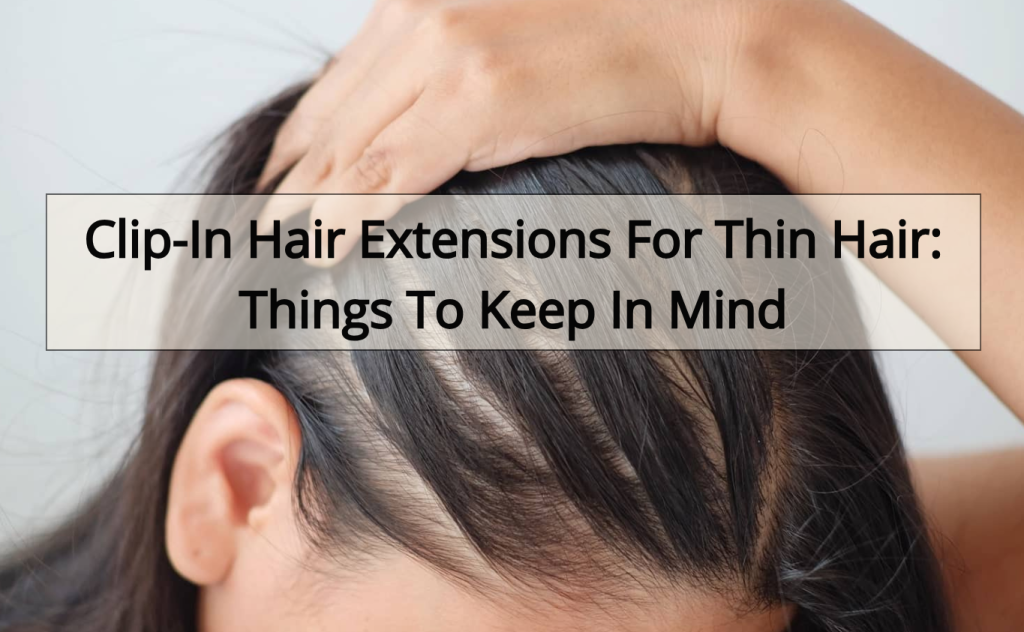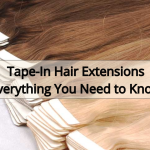Hair Knowledge
Clip-In Hair Extensions For Thin Hair: Things To Keep In Mind
1. Understanding Thin Hair: Characteristics and Challenges
Thin hair is often characterized by low density, finer strands, and a lack of natural volume. For individuals with this hair type, styling can be challenging—especially when aiming for fullness or long-lasting body. Common concerns include visible scalp, hair breakage, and an inability to hold heavy or voluminous styles. These issues make selecting the right type of hair extension especially important.
2. Are Clip-In Hair Extensions Suitable for Thin Hair?
Yes—but with the right type and method. Clip-in hair extensions can be a game changer for thin hair when chosen and applied properly. They provide a non-permanent, flexible solution for adding volume and length without causing long-term damage. However, standard heavy sets may tug on fragile roots, so lightweight, seamless designs are often preferred.
3. What to Look for in Clip-In Extensions for Thin Hair
When choosing clip in hair extensions for thin hair, consider the following:
-
Weight & Thickness: Look for lightweight sets (100g or less) or fine-volume extensions designed specifically for thin hair.
-
Seamless Bases: Choose seamless clip-ins with a silicone or PU base that lies flat against the scalp, making them virtually undetectable.
-
Smaller Clips: Opt for smaller, pressure-sensitive clips to reduce tension on the roots.
-
Hair Type: 100% Remy human hair is best—it blends naturally and can be styled to match your hair texture.
4. Best Types of Clip-In Hair Extensions for Thin Hair
Here are the most suitable types of clip-in extensions for clients with thin or fine hair:
a. Seamless (Invisible) Clip-Ins
-
Made with a silicone base.
-
Lie flat and undetectable.
-
Ideal for a natural look with minimal bulk.
b. One-Piece Clip-In (Volumizers)
-
Adds instant volume with one wide weft.
-
Great for quick styling without layering multiple clips.
-
Best for crown and mid-section fullness.
c. Double Wefted Sets (with caution)
-
Offers more volume but may be too heavy unless spread evenly.
-
Use only if hair can support added weight.
5. How to Apply Clip-In to Thin Hair
-
Start with clean, dry hair.
-
Tease the roots slightly before clipping for better grip.
-
Use fewer wefts to avoid overloading your hair.
-
Avoid the crown area, where clips are easier to detect.
-
Layer wefts at the mid and lower sections for a natural fall.
-
Use a mirror or salon assistance for even placement.
👉 For professionals: Educate your clients on how to section thin hair strategically to maximize volume while hiding clips.
6. Styling Tips for Blending with Thin Hair
-
Curling or waving both your natural hair and the extensions helps blend layers.
-
Use lightweight products to avoid weighing down fine strands.
-
Avoid high, tight ponytails that might expose the clips.
-
Use texturizing sprays or powders to add grip and fullness.
7. Maintenance and Care Tips
-
Detangle gently with a wide-tooth comb or loop brush.
-
Wash clip-ins only after 10–15 wears or when product builds up.
-
Use sulfate-free, lightweight shampoo and conditioner.
-
Always air-dry extensions and store them flat or in a satin bag.
8. Final Thoughts: Should You Use Clip-Ins for Thin Hair?
Absolutely—but only if tailored to your hair type. Clip-in hair extensions for thin hair offer an accessible way to enhance volume and style without salon visits or permanent methods. Whether you’re a hairstylist in Europe or someone new to extensions, understanding the right application and product choice can transform how thin hair looks and feels.
Related Articles:
Clip-In Hair Extensions: Everything You Need to Know
How to Put in Clip-In Hair Extensions
FAQs:
Can You Swim with Clip-In Hair Extensions?
Can You Sleep with Clip-In Hair Extensions?





